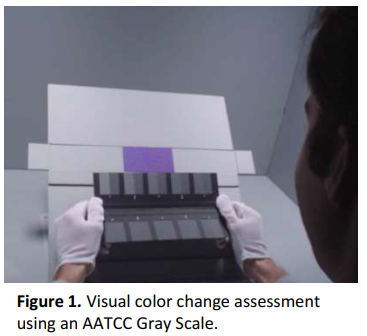Brief Guide to
Color Measurement in Weathering
Introduction
Color change is one of the parameters most often measured in weathering tests of materials and products. This isusually manifested as (1) a color fade, (2) the development of color, such as yellowing, and (3) hue shift, which can be caused by either a change to one or more colorants, or the development of color through polymer degradation, or another mechanism such as “gas fade”, which results in coloration/discoloration. However, many, especially those new to weathering, are unfamiliar with basic color measurement concepts, the color measurement scales available, and their terminology. This will serve as a very brief introduction to color measurement.
Color change can be estimated visually, or more precisely by instrumental methods. Often, we are interested in the specific type and amount of color change during a weathering test or other exposure. To determine the degree of change we need to compare “before” and “after” exposure data. Frequently, period measurements at repeating exposure intervals will be performed and plotted to construct a degradation rate graph. For visual evaluations an unexposed “retain” sample will be needed for sideby-side comparison to the exposed specimens. With instrumental color measurements, the initial (t0) reading is made on each specimen prior to exposure, then during the exposure and/or at the end of the test. Due to normal variability it is customary to
measure at 3 (or more) locations on the specimen and average the values.
